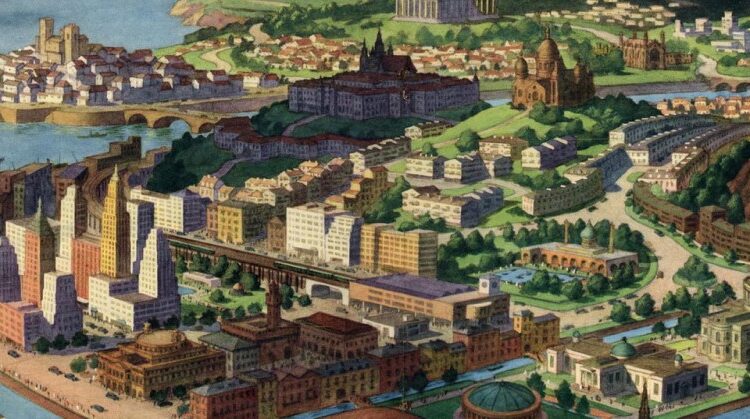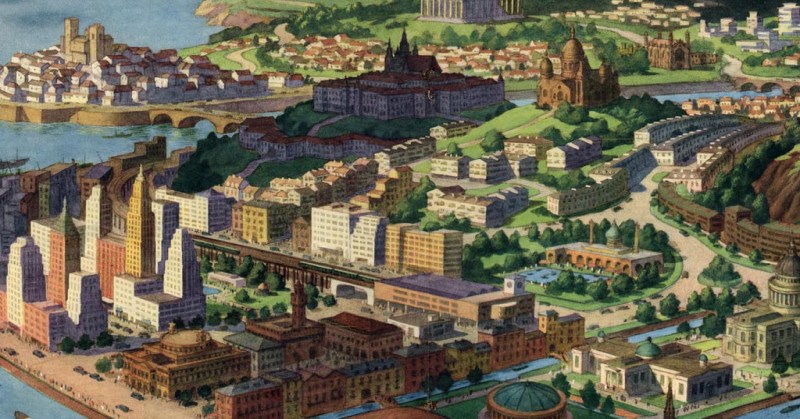
Step into the whimsical world of the 1950s, where British illustrator Ronald Lampitt envisioned an ideal city that seamlessly amalgamated the best features from renowned global metropolises. In 1951, Lampitt crafted a mesmerizing map for the Illustrated Magazine, breathing life into a city born from the imagination of prolific British journalist and writer John Sleigh Pudney (1909-1977). This utopian vision, captured in Lampitt’s interpretation, unfolds as a spacious, undulating seaside paradise adorned with monuments that stir a sense of déjà vu – and rightfully so, as they are architectural icons drawn from the tapestry of the Western world.
The map, a testament to Lampitt’s creative genius, invites viewers to traverse a cityscape that seamlessly weaves together elements reminiscent of the most enchanting urban landscapes. Drawing inspiration from Pudney’s proposal, the unnamed city emerges as a harmonious blend of the finest attributes extracted from great cities worldwide. Lampitt’s artistic brush strokes breathe life into a utopia where the familiar and the novel dance in unison.

One cannot help but marvel at the undulating beauty of this city, strategically situated along the coastline, offering a picturesque view that beckons residents and visitors alike. Lampitt’s creation is not merely a random assortment of structures; instead, it is a carefully curated selection of architectural marvels sourced from diverse corners of the globe. These monuments, borrowed from the grandeur of various cultures, establish a visual tapestry that transcends time and geographical boundaries.
The utopian city, as envisioned in the 1950s, stands as a testament to the collective dreams and aspirations of an era marked by post-war optimism and a yearning for progress. Lampitt’s interpretation encapsulates the spirit of that time, where the ideal city becomes a symbol of hope, innovation, and a harmonious coexistence of architectural wonders.

The familiarity of the monuments within Lampitt’s masterpiece sparks a sense of nostalgia, as viewers recognize iconic structures from their travels or history books. It’s a city where the Eiffel Tower might stand shoulder to shoulder with the Statue of Liberty, and the Colosseum shares the spotlight with the Sydney Opera House. This harmonious convergence of landmarks creates a city that transcends borders and celebrates the shared heritage of humanity.
As we gaze upon Lampitt’s ideal city, frozen in the artistic time capsule of the 1950s, we are transported to an era where creativity knew no bounds. It serves as a reminder that, even in the realm of imagination, the human spirit yearns for a utopia where the best facets of diverse cultures come together to form a harmonious whole. Lampitt’s creation beckons us to reflect on the timeless pursuit of an ideal city – a pursuit that transcends decades and continues to inspire the dreamers and visionaries of each new generation.

Leave a Reply